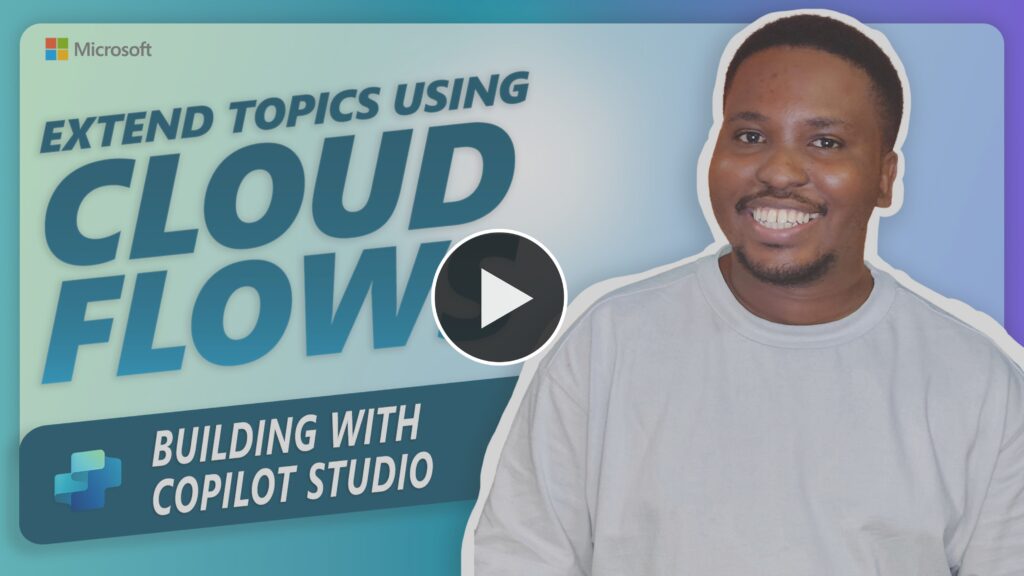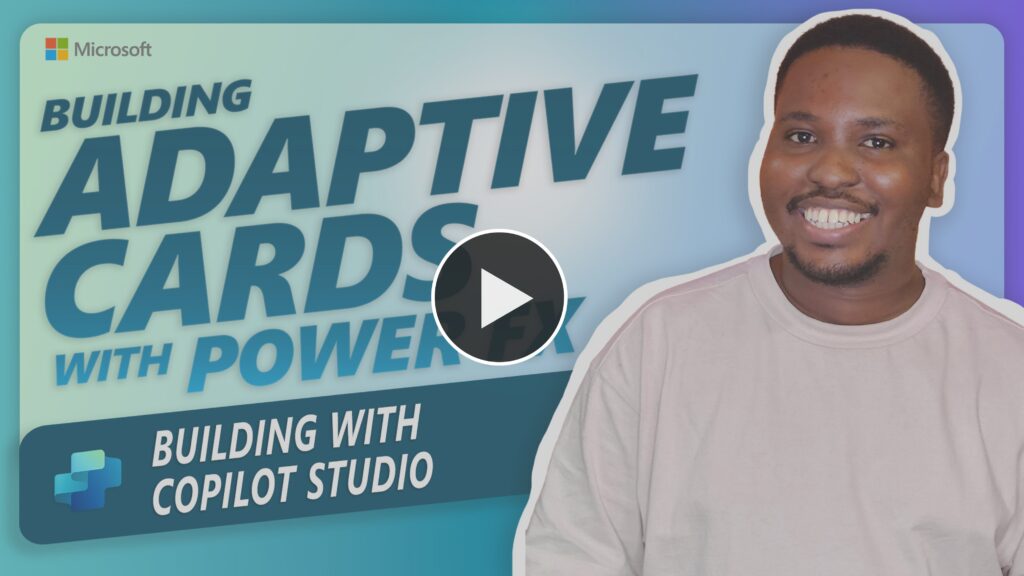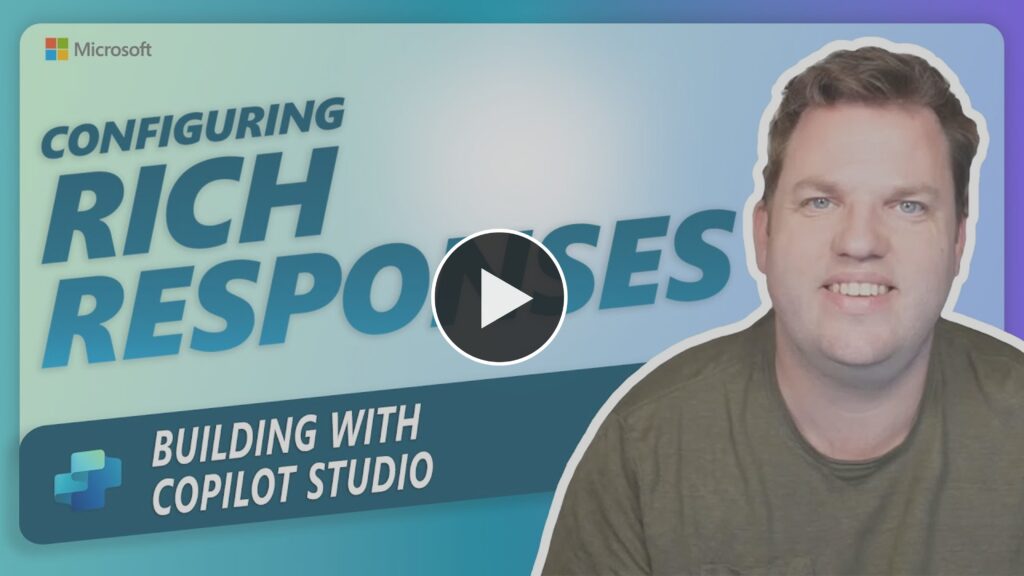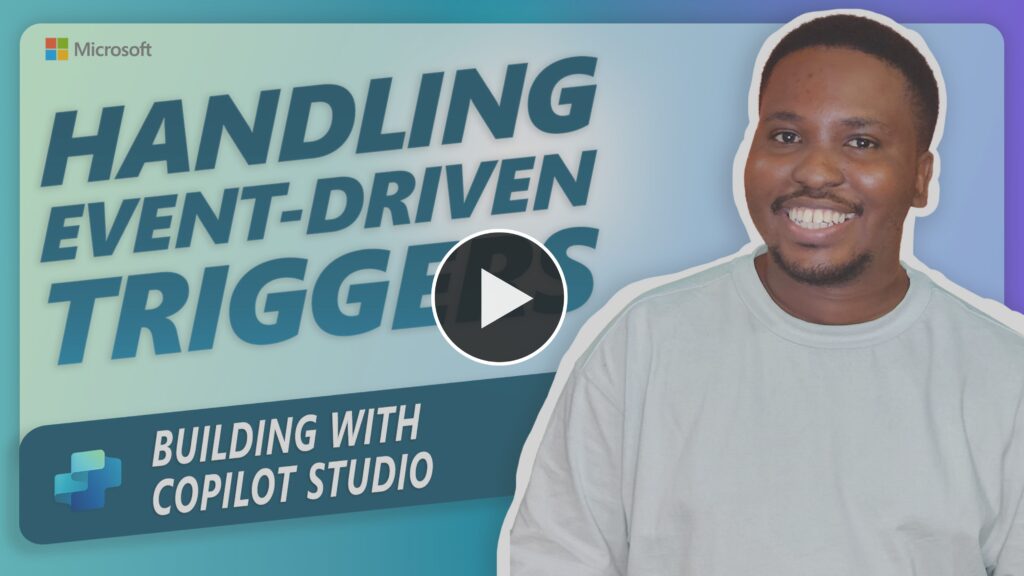Don’t know how to start with building an agent in Microsoft Copilot Studio? We’ve got you covered! In our AI in Action: Building with Copilot Studio series on the Microsoft Power Platform YouTube channel, we have several episodes that guide you through how to get started in building an agent.
In this series we showcase the different capabilities of building agents with Copilot Studio, which includes building, testing, deploying, analyzing, security and data loss prevention policy.
This blog post will cover all the bells and whistles that you will need to know when building with Microsoft Copilot Studio.
If you want to first understand the building basics of Microsoft Copilot Studio, be sure to check out this blog which covers those essentials and then return here when you’re ready to learn further.
What’s next?!
Now you know how to build an agent and add knowledge and connectors to it! What’s next?! It’s time to improve your agent, by optimizing your agent and learning how to make it look nicer for your end users.
Cloud Flows are a great way to extend the capabilities of your agent. By adding cloud flows to your topics, your users gain the ability to interact with common apps and services using natural language. You can use flows that already exist in your Power Platform environment or create a new flow from the Copilot Studio authoring canvas like Gomolemo demonstrates in the video below.
Watch Episode 7 – Extend topics using cloud flows
In this episode, Gomolemo walks you through the following:
- How to launch Power Automate from Copilot Studio
- How to create and add a cloud flow to a topic
- How to add input parameters and dynamic content to a cloud flow
- How to add Dataverse and Microsoft Teams actions to a cloud flow
Learn more:
Improving the user experience for your agent
An agent can be very dull when you only have text experience. Why not add some adaptive cards and other improvements to the user experience? That will certainly light up the agent’s look and feel!
One way of doing this is using Adaptive Cards. With Adaptive Cards, you’re able to add snippets of content to Copilot Studio agents that can also be openly exchanged with other cloud apps and services. These content snippets provide rich conversation capabilities that include text, graphics, and buttons, as a JSON representation.
Watch Episode 8 – Building adaptive cards with Power Fx
In this video, Gomolemo walks you through using Adaptive Cards interactively to gather responses from users or to display relevant information by:
- Adding an adaptive card to your topic
- Designing adaptive cards with the Adaptive Card Designer
- Collecting and processing user input using adaptive cards
- Incorporating Power FX for dynamic interactions
Learn more:
Watch Episode 9 – Configuring rich responses
With rich responses – you can make your agents less dull. They can lighten up the conversations and give the user of your agent an idea of what to expect from the agent.
In this episode, Daniel walks you through the following:
- Which rich responses are there?
- How to use message variations
- How to use adaptive cards
- How to use quick replies
Learn more:
Other tips and tricks
What else can we give you as tips and tricks? The next couple of videos are all about optimizing your agent and learning how to do advanced editing of your agent. You’ll even learn about multilingual agents!
Watch Episode 10 – Edit your Copilot with code editor
In this video, you will learn about the code editor in Microsoft Copilot Studio. But you might think: Hold on! This is supposed to be low code! You’re right, but in the back end of Copilot Studio, the topics and actions are saved as YAML.
YAML is a code format which you can use to store the topics in source control or as snippets. You can see the YAML directly in Copilot Studio, or you can export the solution and see it locally on your machine.
In this video, Daniel highlights the following:
- Code view in Copilot Studio
- Exporting and unpacking the solution
- Opening the solution in Visual Studio Code
Learn more:
Watch Episode 11 – Handling event-driven triggers
If you’ve ever created topics in Copilot Studio, you’re probably familiar with the phrases trigger. This trigger activates when one or more of their trigger phrases match closely with an incoming message from a user. But did you know that there are other trigger types available that can determine when a topic should be executed?
In this episode, Gomolemo walks you through the following:
- A brief recap of the Phrases trigger
- Exploring the Activity and Message Received trigger
- How to use the Inactivity trigger to manage chat interactivity
Learn more:
Watch Episode 12 – Pass variables between topics for your agents
Variables store your customers’ responses to questions from your agent. Reuse variables by passing the values between topics to have manageable bite sized topics.
In this video, Elaiza walks you through the following:
- How to configure variables to return values to a parent topic
- How to configure variables to receive values from other topics
- How to add a Topic input variable
- How to customize the prompt for the Topic input variable
Learn more:
- Microsoft Copilot Studio Implementation Guide
- Reuse variables across topics
- Manage topic inputs and outputs
- Microsoft Copilot Studio Guidance
Watch Episode 13 – Creating a multilingual agent
Lots of countries around the world have people visiting or living in their countries that speak multiple languages. So, it makes sense that our agents can speak multiple languages too!
In this episode, Daniel walks you through the following:
- Configuring the primary language for your agent
- Adding a secondary language to your agent
- Configuring the secondary language for your agent
Learn more:
Learn more about Copilot Studio
Here are some additional resources to supplement your Copilot Studio learning. If you’re just getting started, you can sign up for a Microsoft Copilot Studio trial to explore its capabilities firsthand. To deepen your understanding, head on into the documentation and refer to the Microsoft Copilot Studio Implementation Guide for best practices and deployment strategies. Additionally, explore various learning paths and resources and watch Copilot Studio tutorials to enhance your skills through guided videos.
For a continuously updated list of resources curated by Power CAT, check out this ever-evolving collection designed to support you at every stage of your Copilot Studio journey at https://aka.ms/CopilotStudio/resources 😊









0 comments
Be the first to start the discussion.